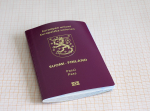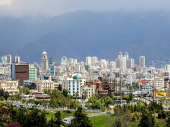
Roughly 6,500 non-EU nationals have taken up short-term employment in Estonia this year, with Ukrainians, Moldovans, and Uzbeks making up the largest share, according to
Interior Ministry data.
Between January and August, Ukraine topped the list of countries whose citizens were issued short-term work permits (1,042 people). Moldova followed with 648 permits, Uzbekistan with 421, India with 201, and Georgia with 125.
Janek Mägi, head of the Border Guard and Migration Policy Department at the Interior Ministry, told ERR that Ukrainians and Moldovans have consistently led the statistics in recent years — a trend linked to Russia’s invasion of Ukraine. Citizens of Russia and Belarus are currently barred from receiving work permits.
Moldova, once third among major sending countries, has climbed to second place, while Uzbekistan has moved up from fifth to third.
Construction remains the dominant sector for Ukrainians and Moldovans, followed by agriculture and manufacturing. Employment patterns for Uzbeks also show a strong concentration in construction.
“About 37 percent of workers from Uzbekistan are in construction, 22 percent in manufacturing, and 21 percent in transport and warehousing,” Mägi said. He noted that the number of Uzbek workers has actually declined: “In 2021 there were around 1,200, this year roughly 600. The peak was in 2022, when about 2,800 Uzbeks were registered for short-term employment.”
So far this year, nearly 2,000 residence permits for work and close to 4,500 short-term work permits have been issued. “Altogether, around 6,500 people from third countries have come to work in Estonia this year,” Mägi added.
Employers cite growing labor shortages
Ain Käpp of the Estonian Employers’ Confederation said a dual challenge is emerging: many sectors increasingly need skilled workers, while employers seeking unskilled labor struggle to find locals willing to fill those roles.
“Construction, metalworking, agriculture, accommodation, and catering frequently turn to foreign labor,” Käpp said. “Demographically, about 6,000 people exit the labor market each year. Whether we like it or not, we must consider how to replace them.”
The agricultural sector faces similar pressures. Ants-Hannes Viira of the Estonian Chamber of Agriculture and Commerce said farms depend on foreign labor because overall employment in Estonia is already high, and fewer people in rural areas are willing to work in agriculture.
Foreign labor is especially important in dairy production, where its share can reach up to 30 percent in some enterprises. Grain farming tends to rely less on foreign workers. Seasonal labor — crucial for planting and harvesting — remains essential in horticulture. Ukrainians were already a steady part of the agricultural workforce before the full-scale war, and their presence has grown since many refugees settled in Estonia, Viira noted.
2026 migration quota set at 1,292
ERR News previously reported that Estonia’s migration quota for 2025 — set at 1,298 residence permits — remained unfilled as the year drew to a close. As of November 10, just 901 permits had been issued, with another 99 applications pending.
The quota applies to most third-country nationals, excluding citizens of the U.S., U.K., and Japan. In recent years, the quota has routinely remained open, in contrast to earlier periods when it filled within weeks.
The cap does not apply to applicants for international protection, family migration, studies, academia, top specialists, or major investors. Temporary residence permits issued for short-term work of up to one year are also exempt. Photo by Adam Jones from Kelowna, BC, Canada, Wikimedia commons.








































